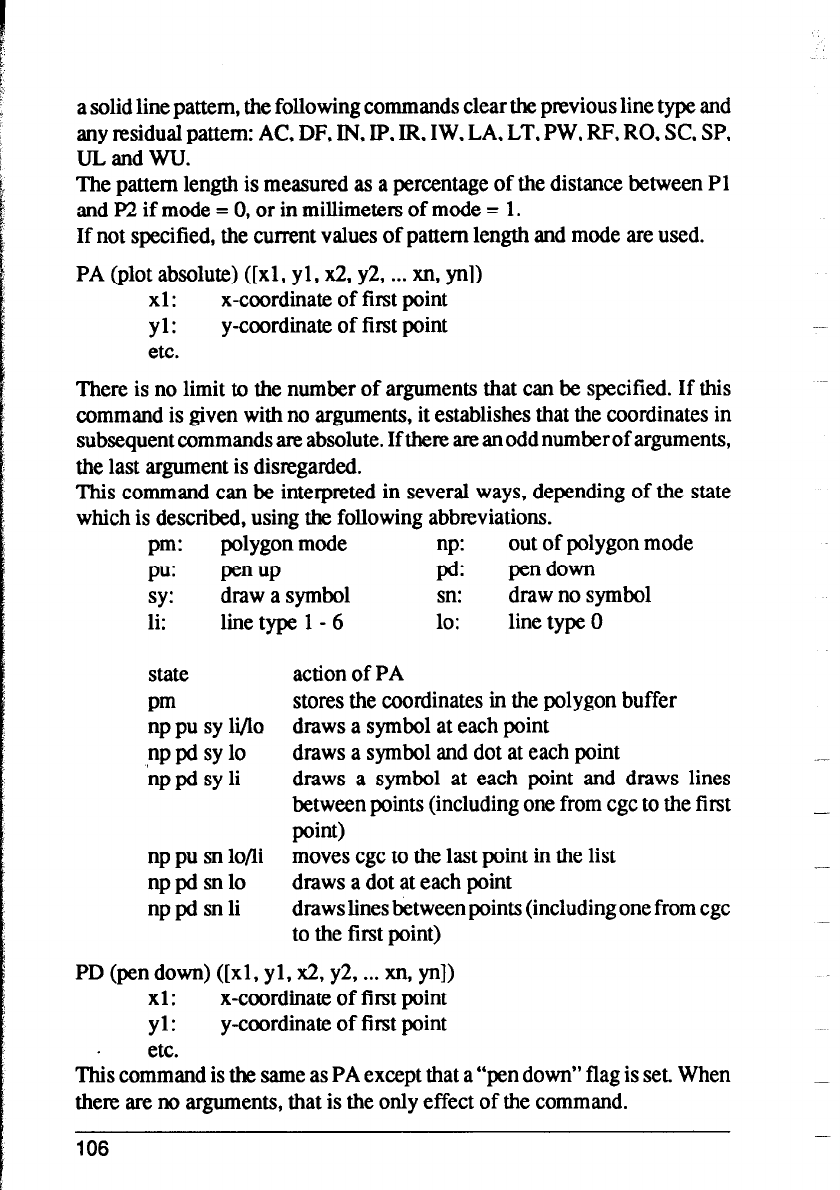
a solid line pattern, the following commands clear the previous line type and
any residual pattern: AC, DF, IN, IP, IR, IW, LA, LT, PW, RF, RO, SC, SP,
ULandWU.
The pattern length is measured as a percentage of the distance between Pl
and P2 if mode = 0, or in millimeter of mode = 1.
If not specified, the current values of pattern length and mode are used.
PA (plot absolute) ([xl, yl, x2, y2, . . . xn, yn])
xl: x-coordinate of first point
yl:
y-coordinate of first point
etc.
There is no limit to the number of arguments that can be specified. If this
command is given with no arguments, it establishes that the coordinates in
subsequent commands are absolute. If there am an odd number of arguments,
the last argument is disregarded.
This command can be interpreted in several ways, depending of the state
which is described, using the following abbreviations.
pm: polygon mode
np:
out of polygon mode
pu:
pen up
pd:
pen down
sy: draw a symbol
sn:
draw no symbol
li:
linetypel-6
lo: line type 0
state
Pm
np pu sy h/lo
,nP pd SY 10
nppd syli
np pu sn lo/h
np pd sn lo
nppdsnli
action of PA
stores the coordinates in the polygon buffer
draws a symbol at each point
draws a symbol and dot at each point
draws a symbol at each point and draws lines
between points (including one from cgc to the first
PoW
moves cgc to the last point in the list
draws a dot at each point
draws lines between points (including one from cgc
to the first point)
PD (pen down) ([xl, yl, ~2, ~2, . . . m ynl)
xl: x-coordinate of first point
yl: y-coordinate of first point
etc.
This command is the same as PA except that a “pen down” flag is set. When
there are no arguments, that is the only effect of the command.
106


















